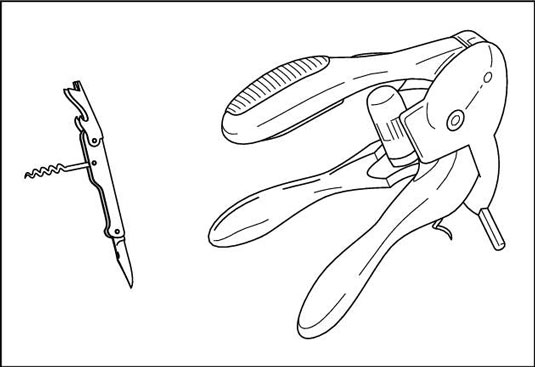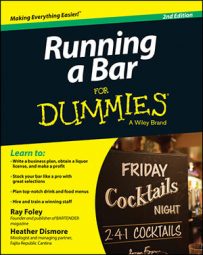Every professional uses the proper tools to do her job well, and a bartender is no exception. If you stumble on used versions of the following supplies and they appear to be in good condition, go ahead and buy them. Don't spend your time looking for used ones though, because the small savings you get isn't really worth the time.
Bar rail and service mats: A bar rail mat is a rubber mat that lies on the edge of the bar. Bartenders place in-progress cocktails on them as they pour, mix, and garnish drinks. The mats catch small spills and clean easily as you run them through the dishwasher. Service mats are thin, rubberized mats placed on the service bar counter, where bartenders place completed drinks ordered by waitstaff.
Bar spoon (1): This is simply a long spoon for stirring cocktails. Classier than straws, these are good to keep handy so bartenders aren't tempted to use their fingers. Bartenders can also pour liqueurs slowly over the back of a spoon into a shooter glass and show off pretty layers of liqueurs.
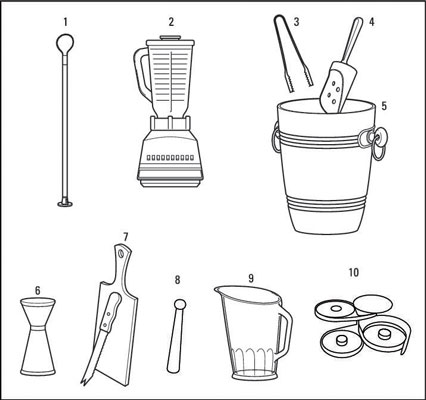
Blender (2): Blenders can be used for frozen drinks.
Ice tongs (3): Metal or plastic tongs are recommended.
Ice scoop (4): Metal or plastic scoops are recommended.
Ice bucket: You need at least one large plastic bucket to carry ice from the ice machine in the kitchen out to the bar to restock your wells. Consider using the rolling version if you can because these large buckets (5 gallons or more) get heavy.
Wine buckets (5): You need wine buckets only if you're serving bottles of white wine and champagne that you want to keep chilled at the patron's table. If you're selling wine by the glass only, you can skip this particular tool.
Jigger (6): A jigger is a metal, double-ended measuring cup. Typically it measures up to ¾ ounce on one end, and up to 2 ounces on the other.
Knives and cutting board (7): At least one sharp paring knife and a cutting board behind the bar specifically for cutting garnishes.
Muddler (8): Use this small wooden bat or pestle to muddle, or crush, herbs and fruit (like mint and limes for Mojitos) for cocktails.
Pourers (9): These plastic pitchers are handy if you don't have juice on your soda guns. Keep backups of OJ, Bloody Mary mix, and cranberry juice handy in these in the reach-in cooler behind the bar. In coauthor Heather's bar, she keeps limeade ready to go in pourers as well, because she's known for terrific margaritas.
Glass rimmer (10): This tool helps you add decorative and tasty garnishes to the rim of your cocktail glasses.
Bottle openers: Choose wall-mounted (with a catcher) or handheld openers to open beer bottles quickly.
A waiter's wine opener, can also be used to open beer bottles, but it's not nearly as fast as either a flat or wall-mounted opener.
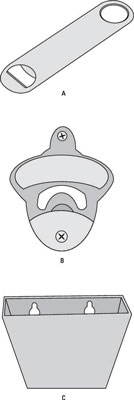
Garnish caddy: A garnish caddy is a divided tray that holds several different types of garnishes, such as lime wedges, olives, and onions.
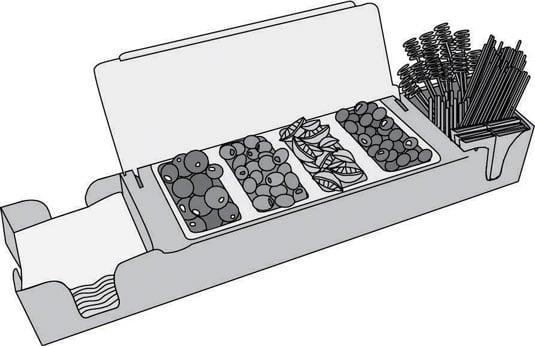
Shakers: These must-have tools let you thoroughly mix cocktails and give them a little foam. Most bartenders use one of two basic styles of shakers:
Boston shaker: These shakers have a glass piece and a tin piece. The roughly 16-ounce glass fits into the tin, which is shaped like a cone, and you shake the drink.
Standard cocktail shaker: These shakers usually have a tight top and a strainer that's fitted onto the bottom half. They come in many types of designs. There must be at least 1,000 different styles, from planes to birds, and they make great collector items.
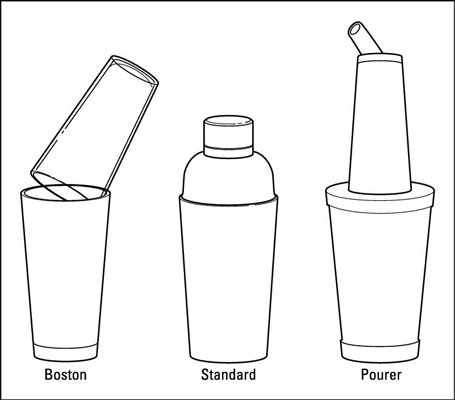
Sinks: You need a few sinks behind the bar — three to set up a dish-washing system, a dump sink next to the ice well, and a fifth exclusively for hand washing.
Soda gun system: Your soda gun connects to your bag-in-the-box (BIB) system. Soda syrup is mixed on demand with soda as the bartender makes the cocktail.
Speed rails: Speed rails are metal trays that hold many of the commonly poured liquors. Many bars use speed rails, in addition to their wells, to keep more liquors within reach. Speed rails are usually set up on the opposite side of the bar and in the area where most cocktails are made.
Strainers: Strainers are handy if you serve cocktails up, or without ice To use the Hawthorn, just place the strainer over the end of the shaker containing your shaken cocktail with the coil facing into the shaker. Pour the drink into your serving glass, through the strainer, and catch the ice.
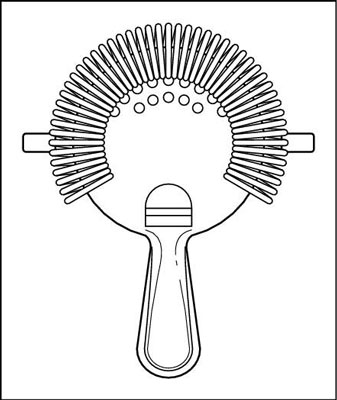
Wells: A well is a dedicated area where (usually) a single bartender works to make drinks. A well should have liquor, ice, garnishes, mixers (often in the form of a soda gun), and easy access to glassware.
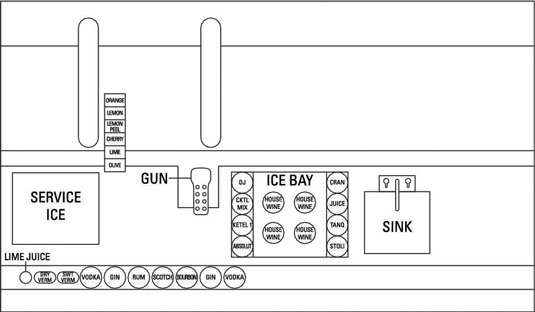
Wine openers: Wine openers come in many varieties these days. If you serve a lot of wine, consider getting a counter-mounted version. If you only have the occasional oenophile (or wine lover), a pocket-sized version like the waiter wine key will do you just fine.
